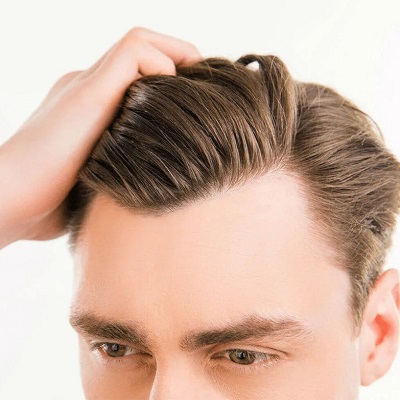Hair transplants in Islamabad have long been an effective solution for individuals experiencing hair loss, and advances in the field have made the procedure more versatile. While scalp hair is typically the primary donor source for hair transplants, some individuals may wonder if body hair, particularly pubic hair, can be used as an alternative donor source. The idea of using pubic hair for a hair transplant is possible, but it comes with certain considerations and limitations that patients should be aware of before pursuing this option.
Understanding the Basics of Hair Transplantation:
Hair transplantation involves taking hair follicles from a donor area and transplanting them to areas where hair is thinning or has been lost. The two most common techniques for hair transplantation are:
- Follicular Unit Transplantation (FUT): A strip of scalp is removed from the donor area, and individual follicular units are harvested and transplanted.
- Follicular Unit Extraction (FUE): Individual hair follicles are extracted directly from the donor area and implanted into the recipient area.
Traditionally, the donor area is the back or sides of the scalp, where hair is typically more resistant to thinning due to genetic factors. However, when there is insufficient donor hair on the scalp, body hair, including pubic hair, can be considered as an alternative donor source.
Using Body Hair for Hair Transplants:
In cases where scalp hair is insufficient, body hair, such as chest, beard, or even pubic hair, may be used for hair transplantation. This technique is known as body hair transplantation (BHT). Body hair, however, has different characteristics than scalp hair, which can impact the final result of the transplant.
Characteristics of Body Hair vs. Scalp Hair:
- Thickness: Body hair tends to be coarser or finer than scalp hair, and the texture can vary greatly from person to person.
- Growth Cycle: Scalp hair has a longer growth cycle compared to body hair, meaning scalp hair can grow for several years before falling out, while body hair typically grows for only a few months.
- Curliness and Shape: Body hair, including pubic hair, tends to be curlier and shorter, making it less suitable for use in certain areas of the scalp, such as the front hairline, where a natural look is important.
Can Pubic Hair Be Used for Hair Transplants?
Yes, pubic hair can technically be used for hair transplantation, but it’s not the most common or ideal choice for several reasons. When considering pubic hair for hair transplantation, surgeons must carefully assess the patient’s individual situation and needs. Here are some factors to consider:
- Different Hair Characteristics: Pubic hair is often coarser and curlier than scalp hair. This makes it less suitable for areas of the scalp where straight or wavy hair is needed to blend in with the surrounding hair. Pubic hair may work in areas where texture differences are less noticeable, such as in the crown or back of the head, but it may not be ideal for the hairline, where uniformity is crucial for a natural appearance.
- Limited Hair Supply: The amount of hair available in the pubic region is significantly less than what is available on the scalp or even other parts of the body, such as the chest or beard. This means that using pubic hair alone may not provide enough grafts to cover large areas of hair loss.
- Different Growth Cycles: The growth cycle of pubic hair is much shorter than that of scalp hair. This means that pubic hair will not grow as long as scalp hair, potentially resulting in shorter strands that don’t fully match the rest of the hair on your head. Additionally, pubic hair may not provide the same density or length as scalp hair, affecting the overall aesthetic outcome.
When Might Pubic Hair Be Used?
In certain cases, pubic hair may be used as a last resort for hair transplantation. This typically occurs when:
- Scalp Donor Hair is Limited: If the patient has a very limited amount of healthy donor hair on the scalp and other areas of the body, such as the beard or chest, have been exhausted or are unsuitable, pubic hair may be considered as an option.
- Scar Coverage: Pubic hair might be used to cover scars from previous hair transplants or other surgeries where texture and uniformity are less important.
- Blending with Other Body Hair: In some cases, pubic hair can be combined with other body hair sources, such as chest or beard hair, to increase the total number of grafts available. This can be useful for achieving a fuller look when scalp donor hair is insufficient.
Challenges and Considerations:
Using pubic hair or other body hair for hair transplants comes with unique challenges that patients should be aware of before proceeding:
- Aesthetic Differences: Due to the textural and growth differences between pubic and scalp hair, patients should have realistic expectations about the final appearance of the transplant. The results may not look as natural as a transplant using only scalp hair.
- Technical Complexity: Transplanting pubic hair requires advanced surgical techniques and experience. Not all surgeon are skilled in performing body hair transplant, so it’s important to choose a surgeon with specific expertise in this area.
- Higher Cost: Body hair transplants, including pubic hair transplants, tend to be more complex and time-consuming than traditional scalp hair transplants. As a result, they can be more expensive.
Alternatives to Pubic Hair for Hair Transplants:
Before opting for a pubic hair transplant, it’s worth considering other potential donor areas that may be more suitable:
- Beard Hair: Beard hair is often a better alternative for hair transplants because it tends to be coarser than scalp hair, making it a good match for areas like the crown or back of the scalp.
- Chest Hair: Chest hair can be another option for adding density, though its texture is often finer and more inconsistent compared to scalp hair.
Conclusion:
While it is technically possible to use pubic hair for a hair transplant, it is not the most ideal or commonly used option due to differences in texture and overall appearance. In most cases, scalp, beard, or chest hair is prefer for body hair transplant. However, for individuals with limited donor hair and specific needs, pubic hair may be consider as part of a broader strategy to restore hair density. If you are considering a hair transplant and have limited donor hair on your scalp, it’s important to consult with an experienced hair restoration surgeon to determine the best approach for achieving your desired results.
Stay tuned for more news and updates on Infinite Insight Hub!



